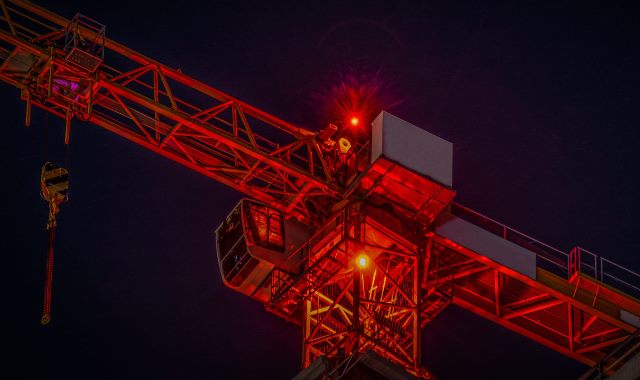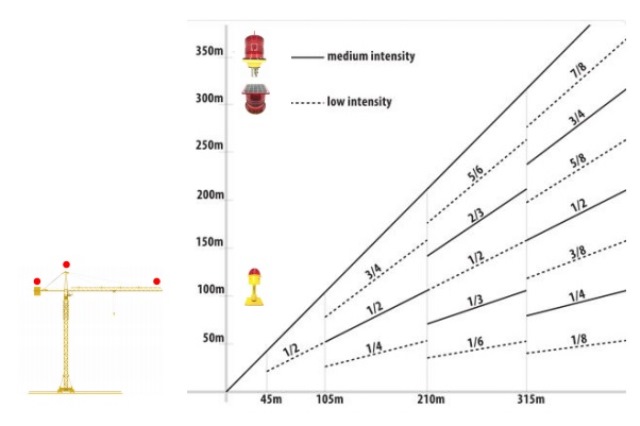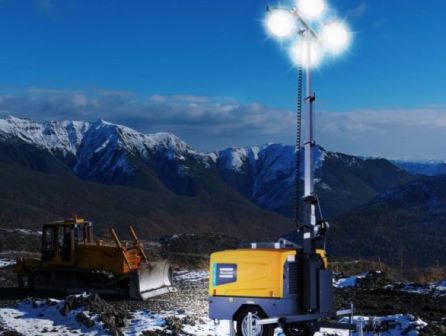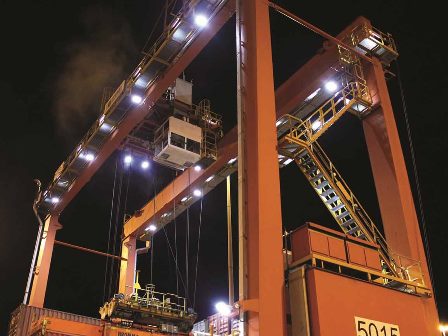Marking and Lighting Equipment.
Considerable effort and research are needed to determine the minimum signaling and lighting systems for tower cranes or the quality of materials that will produce an acceptable level of aviation safety.
The FAA will recommend only those signaling and lighting systems that meet established technical standards.
While additional lights may be desirable to identify an obstruction to air navigation, and sometimes more than one may be recommended, the FAA will recommend minimum standards in the interest of safety.
Therefore, to provide an adequate level of safety, obstruction lighting systems should be installed, operated, and maintained in accordance with the recommended standards herein.

Structures to be Marked and Lighted.
Any temporary or permanent structure, including all appurtenances, that exceeds an overall height of 200 feet (61m) above ground level (AGL) or exceeds any obstruction standard, should be marked or lighted.
The absence of signage or lighting impairs aviation safety, the object may present such extraordinary hazard potential that higher standards for increased visibility may be recommended to ensure aviation safety.
In general, commercial outside lighting should not be used in lieu of FAA-recommended marking or lighting.
Recommendations on marking or lighting structures can vary, depending on terrain features, weather patterns, geographic location, and in the case of wind turbines, the number of structures and overall design layout.
The FAA may also recommend marking or lighting a structure that does not exceed 200 (61m) feet standards because of its particular location.
Guidelines for Crane Obstruction Lights
Since there is such a variance in cranes, each case should be assessed individually.
Cranes segment is enormous: from floating cranes to mobile cranes, to tower cranes, to telescopic cranes, to self-erecting cranes, to level luffing cranes, to deck cranes, to jib cranes, to loader cranes, to stacker cranes.
There is no single standard defining minimum mandatory requirements governing the design and installation of obstruction lighting.
Most important points to night marking cranes lights and their arrangement on the crane shall be such that the structure is indicated from every angle in azimuth; the number of lights to be installed at the top and at each level depends on the type of crane; the number of light levels depends on the height of the structure.
Lighting Levels
Number and types of lighting levels (structure height)
| Hight | Lighting Levels |
| H < 45m | 1 level of low-intensity obstruction lights shall be used |
| 45m < H < 105m | 2 levels of obstruction lights shall be used: top level with medium intensity, intermediate with low intensity |
| 105m < H < 210m | 4 levels shall be used: top with medium intensity, 1st intermediate with low intensity, 2nd intermediate with medium intensity, lower level with low intensity |


Tower Crane Lights
So this post subject points to the primary purpose of cranes and as well as the obstruction lights used for them.

Light Tower with Generator
It is designed for working outside in wind speeds up to designed specifications and is rainproof.

Mobile Crane Warning Lights
The most popular of the safety systems is the crane warning light.
